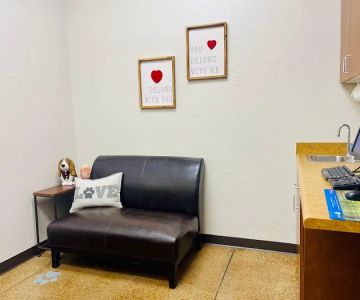How to Handle a Pet with Food Intolerance
When you notice your pet showing signs of discomfort after meals, it might be more than just a tummy ache. Food intolerance in pets can be a tricky issue to diagnose and manage, but it is something that many pet owners face. Whether it’s a dog or a cat, understanding the symptoms, finding the right diagnosis, and managing the intolerance are crucial for your pet’s health and well-being. Let me walk you through how to handle this situation effectively.
1. Recognizing the Symptoms of Food Intolerance
Before diving into solutions, it’s important to first understand the symptoms of food intolerance. Unlike food allergies, which involve the immune system, food intolerance affects the digestive system. Symptoms to watch out for in your pet include:
- Excessive gas
- Diarrhea or soft stool
- Vomiting
- Skin irritations or itching
- Excessive licking of paws or scratching
If your pet has been experiencing any of these symptoms after eating, it could be a sign of food intolerance. While many of these symptoms could point to other conditions, food intolerance should be on your radar as a possible cause.
2. Identifying the Trigger Food
Once you’ve noticed the symptoms, the next step is identifying the food causing the problem. This can sometimes be a bit challenging, as pets tend to eat a variety of things, and it may not always be immediately obvious which ingredient is causing the issue. A food journal can be an effective way to track what your pet eats and when the symptoms occur. By monitoring their diet closely, you can look for patterns that might help identify the culprit.
Another method is to conduct an elimination diet. This involves feeding your pet a single, novel protein and carbohydrate source that they haven’t had before. Over the course of several weeks, you gradually add in other ingredients to see which ones trigger symptoms. This process can help pinpoint the specific food(s) that your pet is intolerant to.
3. Consulting with Your Veterinarian
Once you’ve identified potential food triggers, it’s time to consult with your veterinarian. A vet can help confirm the diagnosis and rule out other possible conditions that could be causing your pet’s symptoms. Your vet might recommend testing or refer you to a veterinary nutritionist who can assist with dietary management.
In some cases, a blood test may be required to detect food sensitivities or intolerances. Though food intolerance is often diagnosed through exclusion, a veterinarian’s expertise will guide you in the right direction.
4. Switching to a Special Diet
The most common and effective treatment for food intolerance in pets is switching to a special diet. Your veterinarian will likely recommend a hypoallergenic or limited ingredient diet that eliminates common allergens. These diets are formulated with easily digestible proteins and carbohydrates, which can help soothe your pet’s digestive system and reduce the symptoms.
It's essential to transition your pet gradually to avoid upsetting their stomach. Start by mixing small amounts of the new food with their current food and gradually increase the proportion over a week or so. Always follow your vet’s instructions when making dietary changes.
5. Using Supplements and Medications
In some cases, your veterinarian might also recommend adding supplements or medications to help with your pet’s food intolerance. Probiotics, for example, can help support your pet’s digestive health by promoting a healthy gut microbiome. Your vet may also prescribe medications to control inflammation or alleviate symptoms like vomiting or diarrhea.
While supplements can be helpful, they should never replace a well-balanced diet. They should be used in conjunction with a food change as part of a comprehensive approach to managing food intolerance.
6. Monitoring Your Pet’s Progress
Once your pet has been switched to the new diet and any necessary treatments are started, it’s important to monitor their progress closely. Keep an eye on their symptoms and maintain regular follow-up appointments with your veterinarian to ensure that the intolerance is being properly managed. If symptoms persist, your vet might recommend further adjustments to the diet or additional tests.
With the right diet, medication, and a little patience, most pets with food intolerance can live happy, healthy lives. It’s all about finding what works best for your furry friend and sticking to it.
Managing a pet’s food intolerance requires time and effort, but it can make a huge difference in their quality of life. If your pet is showing signs of food intolerance, don’t hesitate to consult with a veterinarian to find the right treatment plan for them. If you’re in need of further assistance or more detailed advice, feel free to visit our website at Hidden Brook Veterinary for the best services and recommendations.











